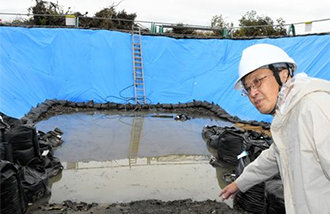Slow Response to ICBM Test Criticized
After North Korea carried out the largest ever missile test on July 5, the government came under serious criticism over its ability to collect and analyze information on the test firing and to take proper, post-firing action.
On July 5, between 3:32 a.m. and around 8:20 a.m., North Korea fired five SCUD and Nodong missiles, and the Taepodong 2, the Norths intercontinental ballistic missile (ICBM), into the East Sea. The missile launches occurred at sites in Gitdaeryeong, Anbyeon-gun, Gangwon Province, and Musudan-ri (formerly known as Taepodong), Hwadae-gun, North Hamgyong Province.
The missile test in the morning was followed by the firing of the seventh missile at 5:22 p.m. on the same day.
The South Korean government speculates that Taepodong 2 landed in the East Sea 40 seconds after its launch, turning the ICBM test into a failure.
In response to the missile test, President Roh Moo-hyun and the National Security Councils standing committee held a ministerial security meeting yesterday, and urged Pyongyang to back away from the strategy of provocation.
For the near term, the government is considering cutting off additional rice and fertilizer aid to North Korea and postponing the inter-Korean ministerial defense talks scheduled for July 11 to 14 in Busan, South Korea.
Since the media reported that the North Korean regime was planning a missile test firing, however, the government was reluctant to apply more pressure on Pyongyang unlike the U.S. and the Japanese governments. The South Korean governments response went: It is not yet clear enough whether North Korea is about to launch a satellite or missiles. The lack of decisive action has come under fire.
At that time, some in the government suggested that in case of a missile test, it review its North Korean policy framework, including, three major areas of South-North economic cooperation: the Gaesong Industrial Complex, the construction of trans-Korean border rail and roads, and Mt Geumgang tourism. But the suggestion was reportedly put aside by those in favor of persuasion.
Moreover, the government made a judgment mistake when it concluded that the chances were far smaller that North Korea would press ahead with missile firing at the end of last month. It was revealed that given the lower possibility for Pyongyangs missile test, the government discussed resuming the six-party talks over the Norths nuclear ambitions ahead of the schedule.
As recently as June 26, a senior government official even made optimistic remarks, We think theres no evidence that proves the pessimism (about fueling missiles). The bottom line is that the evidence is reliable.
Another point of criticism is that the reaction to the July 5 missile test came much later in the morning.
The Japanese government set up an emergency task force in the prime ministers office immediately after the first missile launch at 3:32 a.m. at four. By five oclock in the morning, ministers were in the middle of a discussion over how to respond. At 7:27 a.m., Prime Minister Junichiro Koizumi was already presiding over a consultation.
In contrast to Japans urgency and swiftness, Koreas National Security Councils standing committee was convened at half past seven a.m. The first ministerial security meeting presided by the president came at as late as 11 a.m.
The Grand National Party and the Korean Veterans Association demanded highly strong responses to the missile incident. Even some politicians in the Uri Party, the ruling party, raised their voice that the responsibility lies with the government.
Myoung-Gun Lee Dong-Yong Min gun43@donga.com mindy@donga.com







